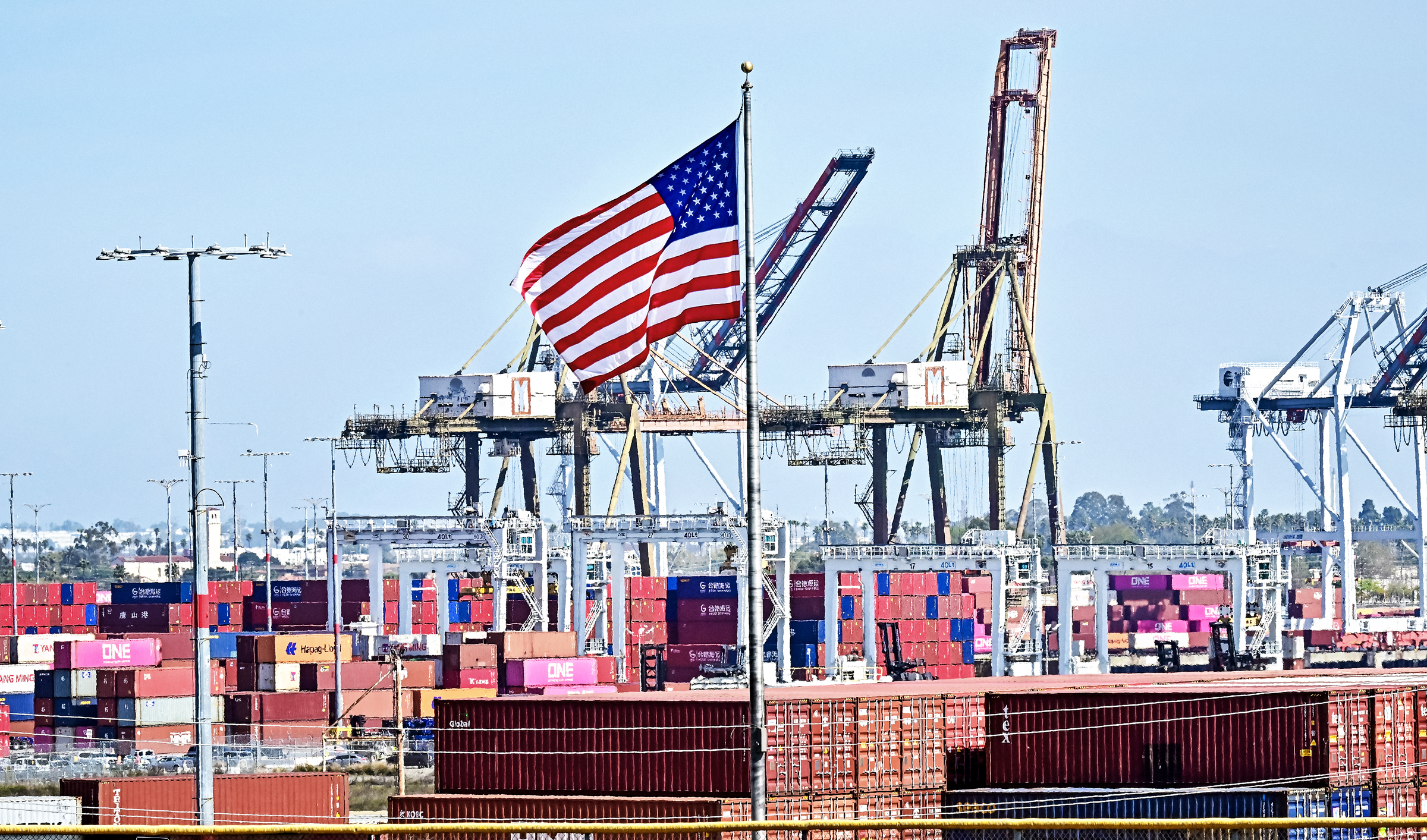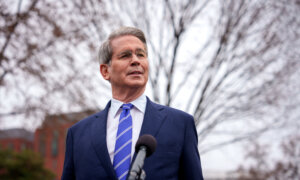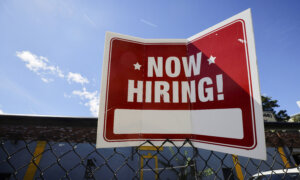The U.S. trade deficit for February narrowed down month-over-month, with exports rising and imports registering a slight decline, according to the latest data from the Census Bureau.
“The goods and services deficit was $122.7 billion in February, down $8.0 billion from $130.7 billion in January,” the agency said in an April 3 statement.
“February exports were $278.5 billion, $8.0 billion more than January exports. February imports were $401.1 billion, less than $0.1 billion less than January imports.”
An April 3 report from auditing company KPMG states that while the February deficit was down by 6.1 percent from January, it remains elevated. The report attributed the high deficit to importers stocking up goods in the first two months of the year “in anticipation of potential tariff announcements.”
On April 2, President Donald Trump announced new tariffs on the United States’ trade partners.
Under the new policy, all countries face a minimum baseline import tariff of 10 percent, along with reciprocal tariffs tailored to each country after taking into account their existing trade barriers with the United States.
Cambodia faces one of the highest reciprocal tariffs at 49 percent, Vietnam at 46 percent, China at 34 percent, India at 34 percent, Taiwan at 32 percent, South Korea at 25 percent, Japan at 24 percent, and the European Union at 20 percent.
These reciprocal tariffs are over and above the other tariffs already imposed on the nations. As such, China’s total tariffs come to 54 percent.
The Trump administration stated that the United States has been “ripped off for more than 50 years” and that the new charges aim to address structural trade imbalances so as to “make America wealthy again.”
The United States’ large trade deficit was also cited as a reason for the tariffs. Last year, the U.S. trade deficit stood at more than $918 billion. The goods deficit was at $1.21 trillion, with a services surplus of more than $293 billion.
“Chronic trade deficits are no longer merely an economic problem,” Trump said. “They’re a national emergency that threatens our security and our very way of life.”
In an April 4 post, precious metals dealer SchiffGold said the United States’ surging trade deficit is likely to reverse over the coming months.
The February trade deficit was the second-largest ever, behind only the January deficit, the post states, noting that this was driven by people trying to get goods into the United States before the tariffs.
“Once the tariffs go into effect, we are likely to see a big contraction in the trade deficit. Not only have we made advance purchases on goods with the recent surge, but the tariffs will make foreign goods more expensive, denting demand,” the post reads.
However, the combination of tariffs and shrinking imports carries risk, according to SchiffGold.
“If we see Imports start to slow dramatically in the months ahead, it could result in a big spike in prices,” it stated.
Tariff Calculations
Some critics question how the Trump administration came up with the reciprocal tariff rates.
The American Enterprise Institute said in an April 4 post that they were calculated based on the United States’ trade deficit with other countries and aren’t exactly based on tariffs imposed by other nations.
According to the institute’s analysis, the administration has instituted reciprocal tariffs for a specific country by dividing the U.S. trade deficit by U.S. imports from that country.
For instance, the U.S. trade deficit with China stood at $295.4 billion last year, with imports at $438.9 billion. Dividing the deficit by imports and multiplying by 100 estimates a tariff rate on China at 67 percent, as assessed by the administration.
Citing this calculation, the institute stated, the Trump administration has imposed a 34 percent discounted reciprocal tariff on China.
The institute stated that the formula led to “highly inflated” tariff rates and that trade deficits with a nation are not “determined only by tariffs and non-tariff trade barriers, but also by international capital flows, supply chains, comparative advantage, geography, etc.”
Meanwhile, the reciprocal tariffs have received praise from business groups and other organizations.
The newly announced tariff measure “prioritizes domestic manufacturers and America’s workers,” said Scott Paul, president of Alliance for American Manufacturing.
“These hardworking men and women have seen unfair trade cut the ground from beneath their feet for decades. They deserve a fighting chance. Our workers can out-compete anyone in the world, but they need a level playing field to do it. This trade reset is a necessary step in the right direction.”
The Coalition for a Prosperous America welcomed tariffs as a “bold and long-overdue reset” of the international trade system.
The group stated that this is a crucial step toward “reindustrializing America” and ensuring the security and economic strength of the country.














